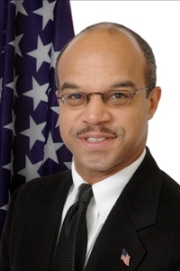by Mary Rupert
The question today is, “Where were you when the Challenger disaster happened 30 years ago on Jan. 28, 1986?”
I do remember a little about where I was. I was writing, rewriting and editing stories and saving them to a big floppy disk on a Compugraphic video display terminal in my little office area at the Wyandotte West newspaper, where I was the associate editor. We were in the Alpine East building in Kansas City, Kan.
The word was spreading through the office about the Challenger disaster. Murrel Bland, the former publisher and editor, brought a small portable TV near my area and placed it on a stack of file boxes, plugged it in and turned it to show the Challenger disaster. The television sat at the end of an aisle, and everyone else could look down the aisle and follow the disaster.
I can remember watching that explosion over and over again on TV. I wondered why they just kept showing the same thing over and over. I was shocked and speechless. I got back to my work while the television next to me was continuing to show the same pictures of the disaster. I did not think of calling anyone to do a local story – didn’t think of any local angle to it at that time, although now I can think of a few ideas. Yes, it seemed to me that the world was falling apart while I had to pay close attention to the little, comparatively insignificant, details of my work.
I had to get back to my work. The day of the week was a Tuesday – important to me because we were on our deadline day for the Wyandotte West newspaper. If I had not previously finished it, my column was due on Tuesday and I was feeling under the gun. Almost everything was already done, but everything had to be finished by Tuesday night, any late stories had to be written and edited, any photos of the day had to be processed, and the text had to go through the phototypesetting system and then had to be cut and pasted onto pages on boards. Adjustments had to be made for headlines to fit better, and more editing and cutting to fit the copy to the space available on the page. Last-minute ads could take up space previously allotted for news stories and then more decisions had to be made on what to cut.
Then the paper was sent off to the printer – the flats were put in a vehicle and driven there. On Wednesday, the paper went through the mails and arrived at readers’ homes on Thursday. The paper always came out every week. The news for us in the weekly print field was a slow process compared to the instant TV and radio news – our stories were turned in by Tuesday night at the latest and came out on Thursday – and we did very little breaking news at our newspaper. We tended to do a lot of features, community news, news analysis and opinion pieces. We did the smaller local news stories that no one else was interested in.
Because there was a teacher, Christa McAuliffe, on board the space shuttle, there was more interest among schools in classroom tie-ins with their educational curriculum, and there were reports of classrooms of children watching the disaster as it unfolded.
Setbacks such as the Challenger disaster preceded a shift in the national mood, changing us from our ever-present American optimism about the future, to the temporary feeling that maybe we couldn’t solve every problem or conquer every obstacle, at least until the next great feat was accomplished. There was a loss of confidence.
There was also a renewed commitment to the small details of work, as the failure of an “O-ring” in the shuttle was partly blamed for the disaster. The little, seemingly insignificant jobs were much more important than they appeared. Also blamed later on was launching the shuttle in January with the temperatures in the teens, when it would have been better to wait for temperatures in the 40s. It was the end of the “go” attitude, where everyone disregarded fixing the small things and launched anyway, prevalent in the space agency at the time.
The Challenger disaster was also a setback for plans to allow civilians in space. It was a slight victory for those who thought space travel should be limited only to professional astronauts.
There was more to its effect than that, though. With any great disaster involving loss of life, there is the feeling that life is fleeting, that our time here on Earth is limited, and we would do well to spend more time with our loved ones.
Do you remember what you were doing when the Challenger exploded on Jan. 28, 1986? Write us a note about it. To reach Mary Rupert, editor, email [email protected].

